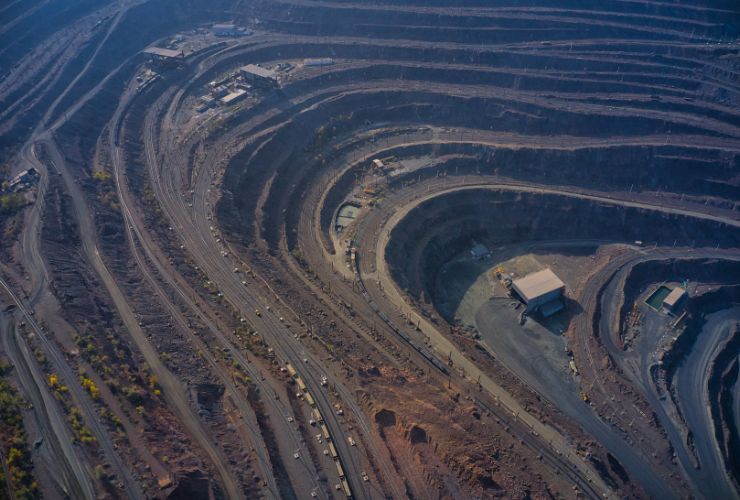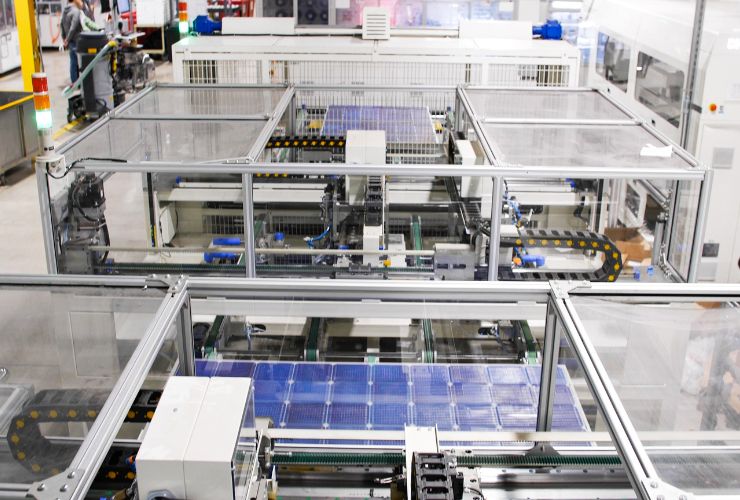Fast read
The use of silicon solar cells is prevalent in modern solar panels because of several reasons. efficiently generates electricity from light, with high-quality cells achieving energy efficiencies of around 25%.
Its abundance in the earth's crust ensures a plentiful supply for mass production of solar panels and other applications. Silicon panels easily integrate into existing electrical grids and generate DC electricity that can be converted to AC through inverter solutions.
Silicon is safe for the environment, does not release greenhouse gases, and can be recycled when no longer needed.
With well-established production methods, silicon solar panels are cost-effective and durable, withstanding various environmental sustainability factors. Research is still being done on other materials, but silicon remains the top choice for solar panels. This is because silicon is inexpensive and offers numerous advantages. Although materials like Perovskite may have the potential for higher efficiency.
Is there silicon in solar panels?
In the past, there were solar panels made using a number of materials including cadmium, amorphous silicon copper indium and gallium compounds. Nearly all solar panels that are now used around the world including Australia use silicon-based solar cells.
Learning about silicon can help people understand how solar energy is getting better and used in various ways. The use of silicon in solar panels represents a perfect fusion of chemistry and engineering, highlighting the nature of modern technological advancements.
Efficiency
Silicon is a semiconductor so it is sensitive to light and able to generate electricity from light extremely efficiently. The conversion efficiency of silicon solar panels has significantly increased over time. Currently, high-quality cells can attain efficiencies of over 25% and panels over 22 to 23% efficiency.
This translates to the ability to produce useful power from more than one-fifth of the sunlight they receive. For a variety of applications, including solar panels this level of efficiency is regarded as respectable and economically viable. So in short if the sunlight that hits the panel is 100% of the energy, then 23% of this energy comes back in the form of electricity. The rest is lost in the conversion.
Abundance
Silicone’s primary ingredient, silicon, is found in abundance in the Earth’s crust. Comprising nearly 28% of the Earth’s crust by weight, silicon is second only to oxygen in abundance. Silicon is most commonly found in the form of silicon dioxide, or silica. Therefore silicon is present in sand, quartz, and various types of rocks like granite.
Because of its availability and abundance, silicon will always be in plentiful supply. This is an important aspect of the mass production of solar panels. It also means the initial raw material is relatively cheap. This helps to keep the cost of PV systems down.
Mining silicon for solar panels
The extraction of silicon begins with the mining of silica-rich sands and rocks. Quartz, a crystalline form of silica, is often targeted because of its purity. The mining process involves standard methods like blasting and drilling. After this, the ore is transported for further processing.
Then the silica is refined and reduced with carbon in high-temperature furnaces, eventually forming metallurgical-grade silicon. Further purification processes in high-tech dust-free facilities are undertaken. These yield electronic-grade silicon, used in semiconductors and photovoltaic cells. The chemically modified silicon is used in solar panel encapsulants and general sealants.
The extraction and processing of silicon must be managed responsibly, and the environmental impact and energy consumption must be considered. These factors affect the overall sustainability of the silicon and silicon products used in solar technology.

Compatibility
Silicon solar panels can easily be incorporated into the infrastructure and electrical grids that are already in place. They generate direct current (DC) electricity, which is easily transformed into alternating current (AC) by means of an inverter solution. Because of its compatibility, solar energy can be adopted and integrated into the current electrical system without requiring major changes.
Environmental effect
Silicon is a non-toxic material, as opposed to other materials that have been used in the past to make solar panels such as the rather toxic Cadmium. Furthermore, compared to other energy sources, silicon solar panels have a relatively minimal environmental impact.
Used in solar panels via solar cells they produce electricity without emitting greenhouse gases or polluting the air while in use. Silicon is easy to recycle, making end-of-life management for solar panels more sustainable. The recycling infrastructure for silicon solar panels is constantly growing, improving the process.
Cost-effective
Over many decades, solar cell technology has undergone tremendous development and improvement. The production methods for silicon-based cells are efficient. Solar panels are popular for homes and large projects because they are affordable and easy to expand. This is because the technology used to make them is well-developed.

Durability of silicon in solar panels
Extreme temperatures, dampness, and UV rays are just a few of the environmental factors that solar panels must contend with. Solar panels’ lifetime is guaranteed by silicon’s outstanding stability and toughness. This means it is less likely to break or lose performance because of heat changes, staying strong for a long time. This is why solar panels can have warranties for 25 years.
Other than solar wafers and then cells silicon is used in other solar panel-related applications such as:
Materials
Silicon’s unique physical and chemical properties make it an ideal encapsulant material for solar cells. It protects the cells from environmental factors like moisture, dust, and mechanical stress, ensuring longevity and performance stability.
Adhesive bonding
Solar panels often require bonding between different layers and materials. Silicon adhesives provide an excellent solution, offering strong bonding while allowing for thermal expansion differences between the materials.
Gaskets and seals
Silicon rubber gaskets and seals are used in solar panels to seal joints and make them more resistant to bad weather.
Have you heard of flexible solar panels?
With the advancement of flexible solar panels, silicon plays a vital role in manufacturing lightweight modules. These flexible panels are gaining popularity for portable applications and building-integrated photovoltaics.
Silicon is widely available, stable, efficient, and environmentally friendly. It is a popular choice for solar panels because of its semiconductor qualities and compatibility with existing infrastructure.
Scientists are studying new materials for making solar panels that could work better than silicon cells. Perovskite cells are more efficient than silicon cells. They can reach close to 30% efficiency, while silicon cells peak at around 25%.


